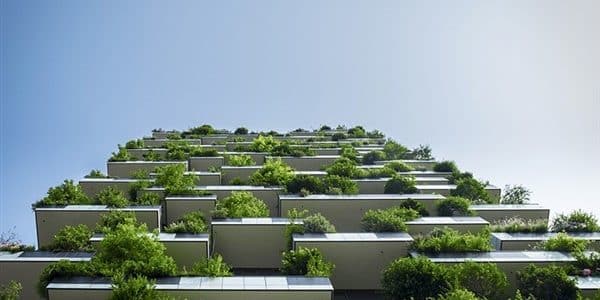
GREEN LIGHT FOR TALLER BUILDINGS
What will apply to areas with a building factor between 0.8 and 1.6 1 with a building factor above 1.6 • The terms and conditions
Temporarily clears the landscape for taller buildings based on building factor
The new transitional provisions of the New Building Regulation (NOK) will only apply to areas where the building factor is greater than 0.8. This means that the total height of the increase cannot exceed a total of 2.5 meters in areas where the building factor varies from 0.8 to 1.6 and 3 meters for areas where the building factor is greater than 1.6 .
It is clarified by the Ministry of Energy that these are transitional provisions that will apply until 2025, i.e. until the urban planning plans for 70% of the country have been approved. This legislation (see also “THE NEWS” 22/4/2024) is promoted by the Ministry of the Interior in an attempt to tone down the controversy that has erupted over the height of buildings. The Ministry of the Interior acknowledges that the new data (based on the issued building permits) require the redefinition of the NOK. The New Building Regulation, in addition to the basic text of ’12, is accompanied by a number of amendments and within this polynomial landscape that has been created, some have made use of the combination of articles and have gained more height than what is foreseen.
“It is true that in some cases of regions, issues have arisen with the use of NOK incentives regarding building heights. These issues rightly concern property owners, engineers and Building Service employees. Added to this concern are the referring decisions of the Council of State to the Plenary for specific cases” say sources from the Ministry of Foreign Affairs.
Scalable restriction
According to the same sources, the transitional legislation will not horizontally cancel the current NOK, but will provide for the gradual restriction by region and by case. At the same time, as they say, the Ministry of the Interior will prepare an urgent documentation study that will evaluate the implementation of the new transitional regulation for the environmental upgrade and improvement of the quality of life in densely built-up and urban areas.
NOK was legislated in ’12, and in the years that followed there were no current reactions. The economic crisis also “helped”, where we had a decline in construction activity. However, with the amendments that followed and the new start of construction activity with the increase in investment interest, the combined application – from the builders’ point of view – of the NOK’s incentives began, resulting in the increase in the height of certain buildings. Presenting a general framework for the NOK, as pointed out by the TEE, buildings constructed using incentives are expected, among other things, to be of A+ energy classification according to KENAK, i.e. buildings which in practice have reduced primary energy consumption and carbon dioxide emissions carbon, at least by 50% compared to conventional constructions. Furthermore, they occupy less coverage on the plot by 10% to 25% as the case may be, compared to a conventional new building, thus increasing the planting within the urban fabric by the same percentage, while they are built on already built-up plots, after first demolishing old and energy-consuming ones buildings.
